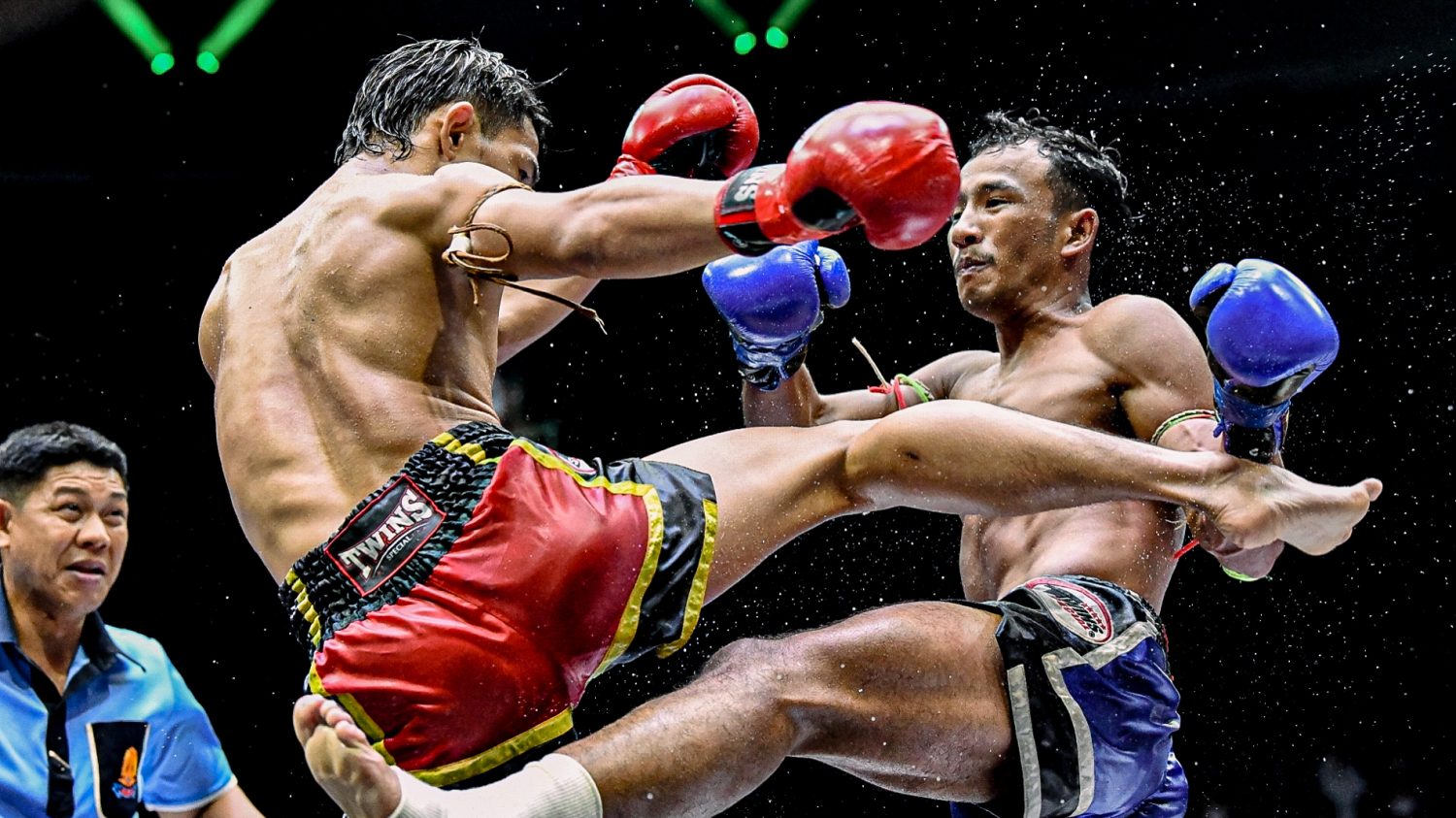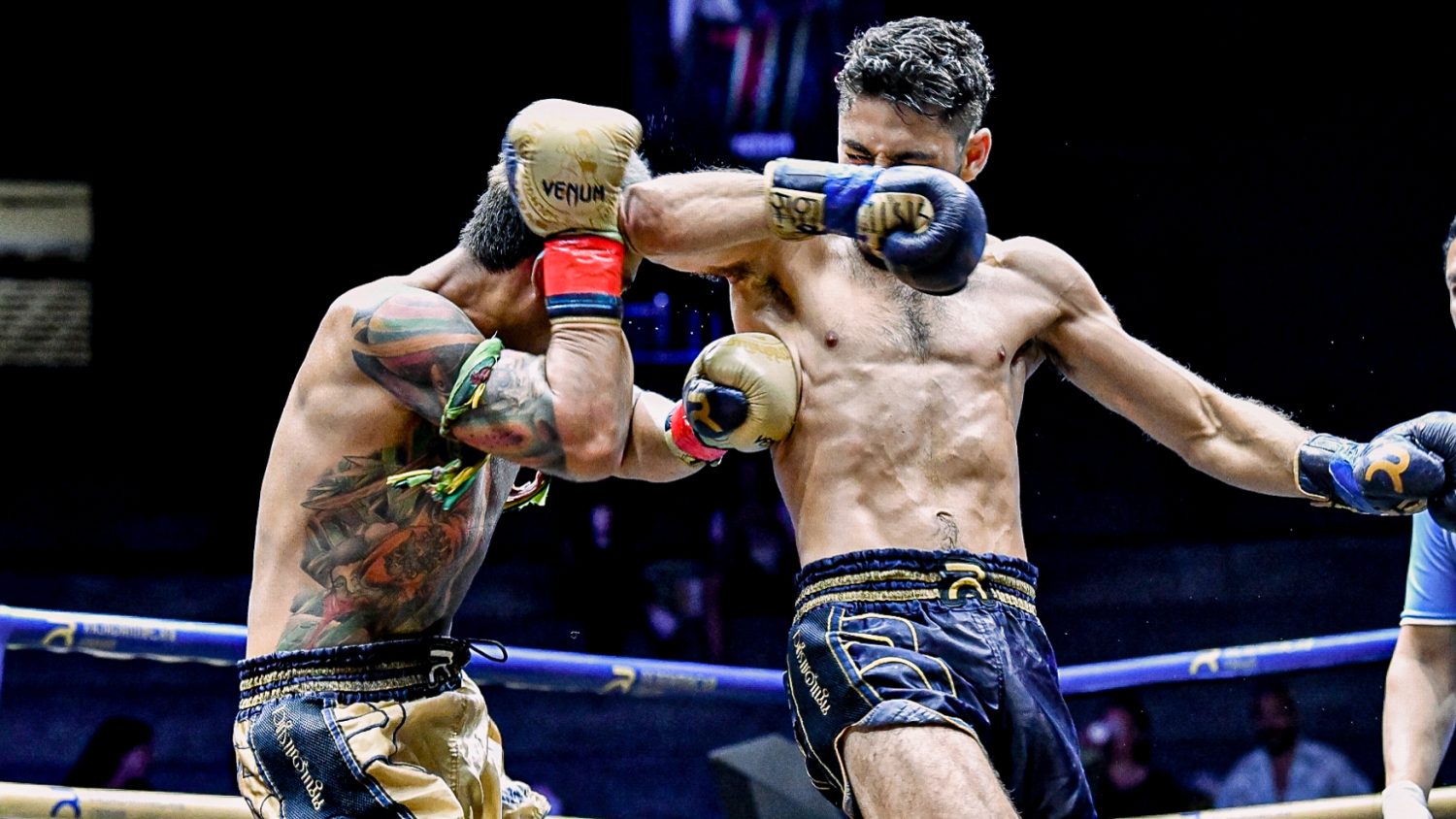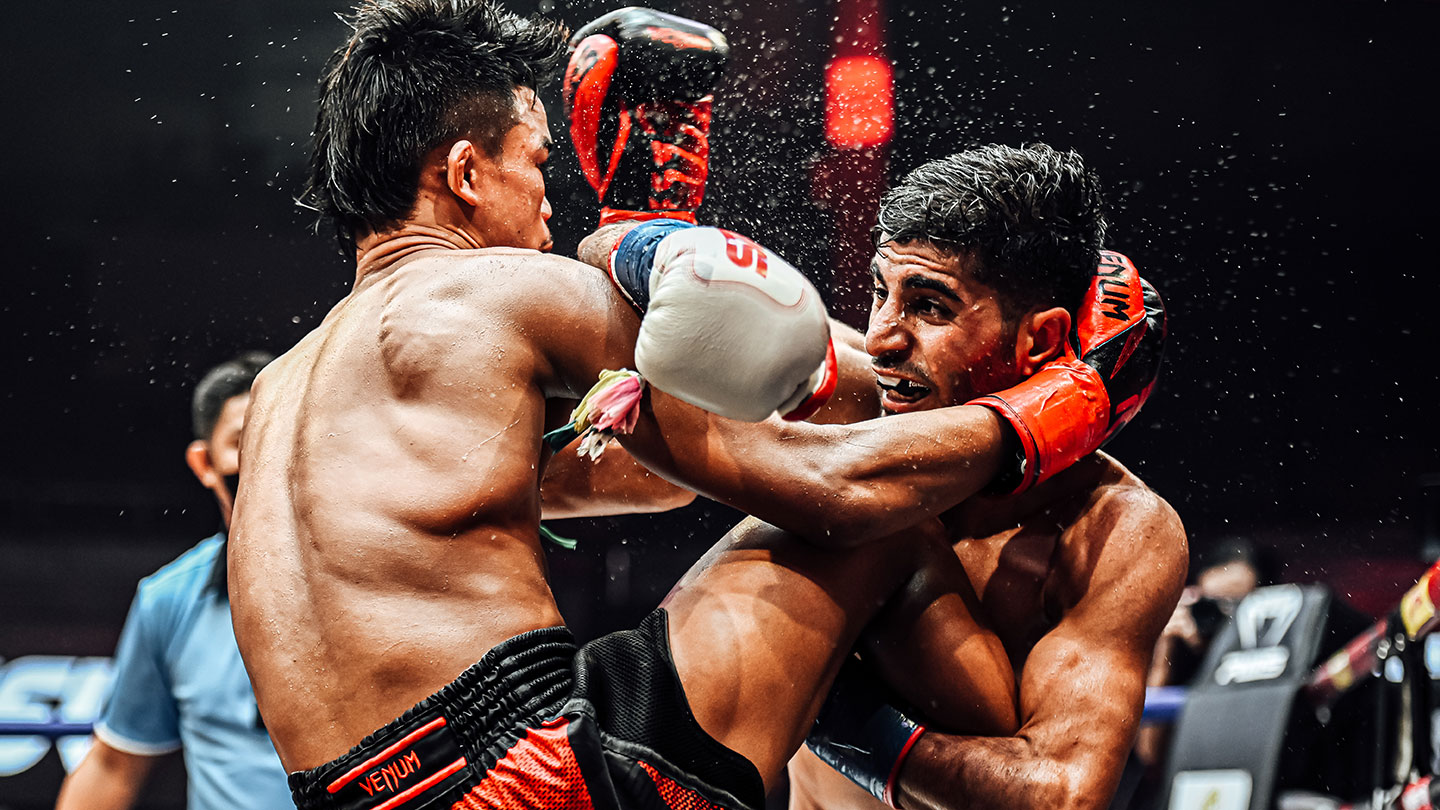Learn Muay Thai rules from the first Muay Thai Stadium in the world Rajadamnern. scoring criteria, prohibited techniques, weight classes, and more.
Oct 26, 2023
Muay Thai Rules from The First Muay Thai Stadium [Full-Guide]


Muay Thai is a striking martial art that originated in Thailand centuries ago. Renowned for its powerful techniques and electrifying fights, Muay Thai has captivated martial artists and enthusiasts worldwide. Central to the sport’s success is the implementation of strict rules and regulations that govern every aspect of a Muay Thai fight. Understanding and following these rules are not only essential for fair competition but also crucial for maintaining the integrity and safety of the fighters. Let’s delve into the overview of Muay Thai rules, their significance, and the fascinating history behind their development.
In this article, we will delve into the profound significance of Muay Thai rules, including the essential Muay Thai fighting guidelines, and provide insights into the intricate Muay Thai scoring criteria.
Importance of understanding and following Muay Thai rules for fair competition
Muay Thai, as we know, is a dynamic combat sport where two fighters face off in a ring, aiming to outclass each other with their skill and techniques. Over time, the sport has evolved from brutal and lawless contests into a regulated and respected discipline with standardized Muay Thai rules. Let’s explore the significance of these rules in elevating Muay Thai to a legitimate and safe sport through the following points:
- Muay Thai fights are conducted in a ring with two fighters engaging in intense combat, showcasing their skill and techniques.
- Historically, these contests were brutal and lacked traditional Muay Thai rules, leading to a lawless environment.
- As Muay Thai gained popularity, the necessity for standardized regulations became evident.
- The establishment of clear rules has elevated Muay Thai to a legitimate sport.
- Standardized regulations ensure the safety and fairness of the competition for practitioners and spectators alike.
Brief history of the development and evolution of Muay Thai rules

The essence of the official Muay Thai regulations lies in the balance between showcasing the art’s power and maintaining a level of respect and sportsmanship. Striking techniques using fists, elbows, and knees are allowed, making it a dynamic and versatile combat sport. The fighters are judged not only on their offensive prowess but also on their defensive maneuvers.
One of the most iconic venues that embody the spirit of Muay Thai ring rule is the Rajadamnern Stadium in Bangkok. This legendary arena has witnessed countless epic battles, showcasing the finest fighters adhering to the time-honored rules of Muay Thai and ring control, making it a complete and strategic martial art.
Located in the heart of Bangkok, Rajadamnern Stadium stands as one of Thailand’s most prestigious and revered venues for Muay Thai matches. With its inception in 1945, the stadium has become a symbol of tradition and excellence in the world of combat sports.
Rajadamnern Stadium stands as a living testament to the spirit of Muay Thai and the importance of its rules and regulations. This iconic venue continues to attract enthusiasts from all walks of life, providing them with an opportunity to witness the power and grace of Muay Thai fighters who adhere to the sport’s time-honored traditions.

Essential rules of Muay Thai fights

Basic Muay Thai techniques and scoring criteria
At the heart of every Muay Thai fight are the techniques employed by the fighters. These techniques include punches, kicks, knees, and elbows. The art of combining these eight limbs seamlessly allows for a vast array of attacks and counters.
When scoring a Muay Thai competition, judges follow the standard Muay Thai judging system and take into account several factors:
- Effective Striking: Judges award points for clean and impactful strikes landed on the opponent. Techniques executed with precision and power are valued higher.
- Ring Control: The fighter who can dictate the pace and positioning of the fight often gains an advantage in scoring. Maintaining the center of the ring and controlling the distance are vital aspects of ring control.
- Clinch and Grappling: Muay Thai clinch techniques allow fighters to hold and strike each other at close range. Skilled clinch work, throws, and knee strikes, can significantly impact the judges’ scoring.
- Defense and Evasion: Fighters are also evaluated based on their ability to defend against strikes and avoid getting hit. Effective evasive maneuvers, blocking, and parrying contribute to a fighter’s score.
Rounds system and duration
Muay Thai round structures are typically divided into three to five rounds, each lasting a set duration. The round duration varies depending on the level of competition (Muay Thai weight class), with professional fights commonly having three-minute rounds. Between each round, fighters have a short interval to rest and receive advice from their corners.
The number of rounds allows for a gradual buildup of intensity and provides fighters with opportunities to strategize and adjust their approach during the fight. The shorter duration of each round demands fighters to be efficient with their energy expenditure and maintain a relentless pace.
Come watch the adrenaline-pumping action of Muay Thai within the dynamic round system with your own eyes at Rajadamnern. Book your ticket today!
Now that we have explored the number of rounds and Muay Thai match duration of each round, let’s proceed to dig into the crucial subject of Muay Thai prohibited techniques.
Prohibited Techniques and Fouls

While Muay Thai allows a wide range of striking techniques, there are specific techniques that are considered illegal and strictly prohibited. These include:
- Groin strikes: Deliberate strikes to the groin area are off-limits due to the high risk of serious injury.
- Strikes to the back of the head or spine: Targeting the back of the head or spine is forbidden as it can cause severe harm to the opponent’s nervous system.
- Biting: Any form of biting is strictly prohibited in Muay Thai fights.
- Headbutting: The use of the head as a weapon is not allowed and can result in immediate disqualification.
- Eye-gouging: These dangerous and unsportsmanlike techniques are strictly forbidden.
- Attacking a downed opponent: Striking an opponent who is down and unable to defend themselves is not allowed in Muay Thai. This rule ensures the safety of fighters in vulnerable positions.
- Intentional foul play: Any action intended to harm or injure an opponent outside the rules is considered a foul and may lead to penalties or disqualification.
Adhering to these rules is crucial for the safety and well-being of the fighters. Muay Thai places a strong emphasis on honor, and fair play, and fighters are expected to respect Muay Thai referee’s instructions and uphold these principles during competition.
Muay Thai fight equipment and gear regulations
Fighter safety is of utmost importance in Muay Thai, and appropriate equipment plays a significant role in achieving this. All fighters are required to wear Muay Thai gloves, mouthguards, and groin protectors during bouts.
The use of Muay Thai protective gear reduces the risk of injuries to the hands, head, and groin area. Mouthguards are essential for safeguarding the teeth and preventing concussions, while groin protectors shield against accidental strikes to the sensitive areas.
The boxing ring itself is designed with specific dimensions, typically measuring between 6 – 8 meters square. The corners of the ring are padded to provide additional safety for the fighters during clinch work and exchanges close to the ropes.
Weight Classes and Fighter Rankings
To create balanced and competitive matchups, Muay Thai categorizes fighters into different weight classes. This ensures that opponents are evenly matched in terms of size and weight, allowing skill and technique to be the determining factors in a fight. Common Muay Thai weight classes include bantamweight, lightweight, welterweight and middleweight among others.
Fighters are ranked based on their performance and victories against opponents of similar or higher rank. These rankings help determine the trajectory of a fighter’s career and lead to more significant opportunities in the sport.
The weight class system in Muay Thai enables fighters to compete against opponents of similar size and physical attributes, promoting fairness and enhancing the competitive spirit of the sport.
Variations in Muay Thai Rules

While the fundamental principles of Muay Thai remain consistent, there can be variations in the rules across different regions and organizations. These variations often stem from local traditions and interpretations of the sport.
For instance, some regions may allow certain techniques that are prohibited elsewhere, or they may have different Muay Thai scoring criteria. Such variations contribute to the diversity and richness of the art, making Muay Thai a dynamic and ever-evolving combat sport.
Another aspect to consider is the distinction between amateur and professional Muay Thai fights. While many of the rules remain the same, there might be some differences in the permitted techniques and the duration of rounds between the two categories.
The sport’s governing bodies continually review and update the rules to ensure the safety and fairness of the competition, adapting to the needs and demands of the evolving sport.
Conclusion
The rules of Muay Thai are the backbone of fair and exhilarating combat. They establish a framework for fighters to showcase their skills while prioritizing safety and sportsmanship. Understanding and respecting these rules not only contribute to the authenticity of the sport but also honor its rich history and cultural significance.
As a sport that demands discipline, dedication, and respect, Muay Thai embodies the essence of tradition and martial arts evolution. Whether you’re a participant or a spectator, understanding Muay Thai rules enhances the captivating experience of this martial art.

Are you ready to experience the captivating new era of Muay Thai with its authentic rules? Don’t miss this extraordinary opportunity to witness the magic of Thai boxing in action! Grab your tickets now and immerse yourself in the thrill of a genuine Muay Thai match at Rajadamnern Stadium!

Related News

12 Best Martial Arts for Self-Defense, Fitness, and Sport
Sep 20, 2023
Looking for the best martial arts for self-defense, fitness, or personal interest? Explore a comprehensive guide comparing martial arts that fit your goals.







